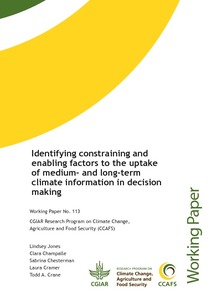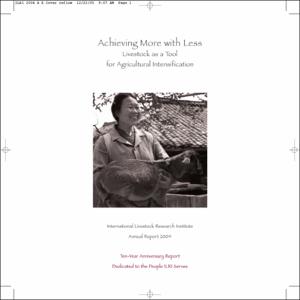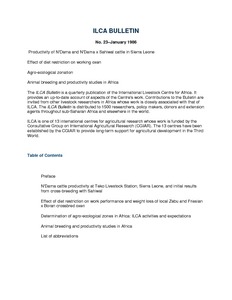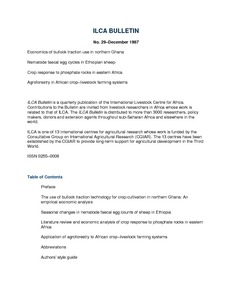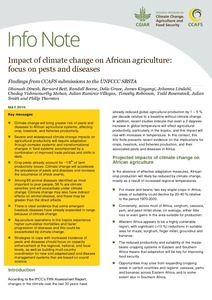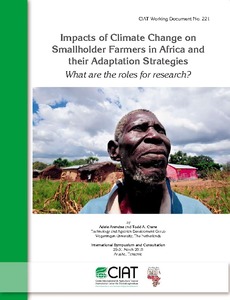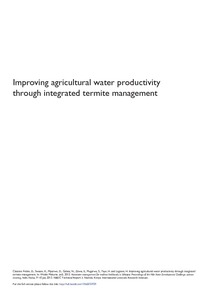Identifying and characterizing areas for potential forage production in Rwanda
Identifying constraining and enabling factors to the uptake of medium- and long-term climate information in decision making
We apply a systematic review of peer-reviewed literature to assess constraining and enabling
factors to the uptake of medium- to long-term climate information in a wide range of sectoral
investment and planning decisions. Common applications of climate information are shown to
relate to adaptation of environmental policy and planning, urban planning and infrastructure,
as well as flood and coastal management. Analysis of identified literature highlights five
If we halt deforestation, will the world starve?
Making sure that we will continue to have enough to eat is at the heart of our shared ambitions to mitigate climate change. The United Nations Framework Convention on Climate Change (UNFCCC), the convention that has guided us through the highs and lows of 18 rounds of annual negotiations, states upfront that the reasons to stabilise emissions are threefold: to allow ecosystems to adapt naturally , to enable economic development to proceed in a sustainable manner and to ensure that food production is not threatened .
Impact of climate change on African agriculture: focus on pests and diseases
According to the IPCC’s Fifth Assessment Report, changes in the climate over the last 30 years have already reduced global agricultural production by 1 – 5 % per decade relative to a baseline without climate change. In addition, recent studies indicate that even a 2 degrees increase in global temperature will affect agricultural productivity, particularly in the tropics, and this impact will rise with increases in temperature.
Implementing REDD+ (Reducing Emissions from Deforestation and Degradation): evidence on governance, evaluation and impacts from the REDD-ALERT project
The REDD-ALERT (Reducing Emissions from Deforestation and Degradation from Alternative Land Uses in the Rainforests of the Tropics) project started in 2009 and finished in 2012, and had the aim of evaluating mechanisms that translate international-level agreements into instruments that would help change the behaviour of land users while minimising adverse repercussions on their livelihoods. Findings showed that some developing tropical countries have recently been through a forest transition, thus shifting from declining to expanding forests at a national scale.
Improving agricultural sustainability and livelihoods in the tropical American hillsides
Improving agricultural water productivity through integrated termite management
Termite infestation is symptomatic of severe land degradation in many semi-arid regions of the Nile Basin. One characteristic of land degradation is low organic matter (OM) reserves in vegetative biomass and soil. One consequence is excessive rainwater depletion through non-productive evaporation and runoff leading to low agricultural water productivity and diminished livelihoods. CPWF research demonstrated that rapid restoration of pasture production is possible by providing manure through night corralling of cattle prior to re-seeding termite affected rangeland in Uganda.



